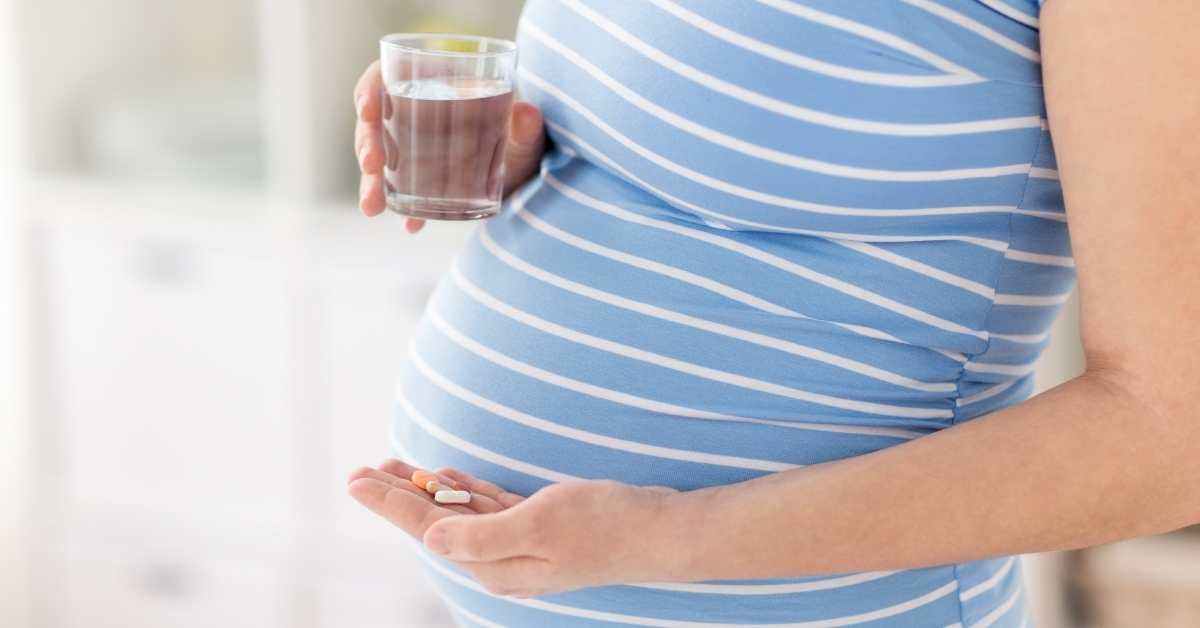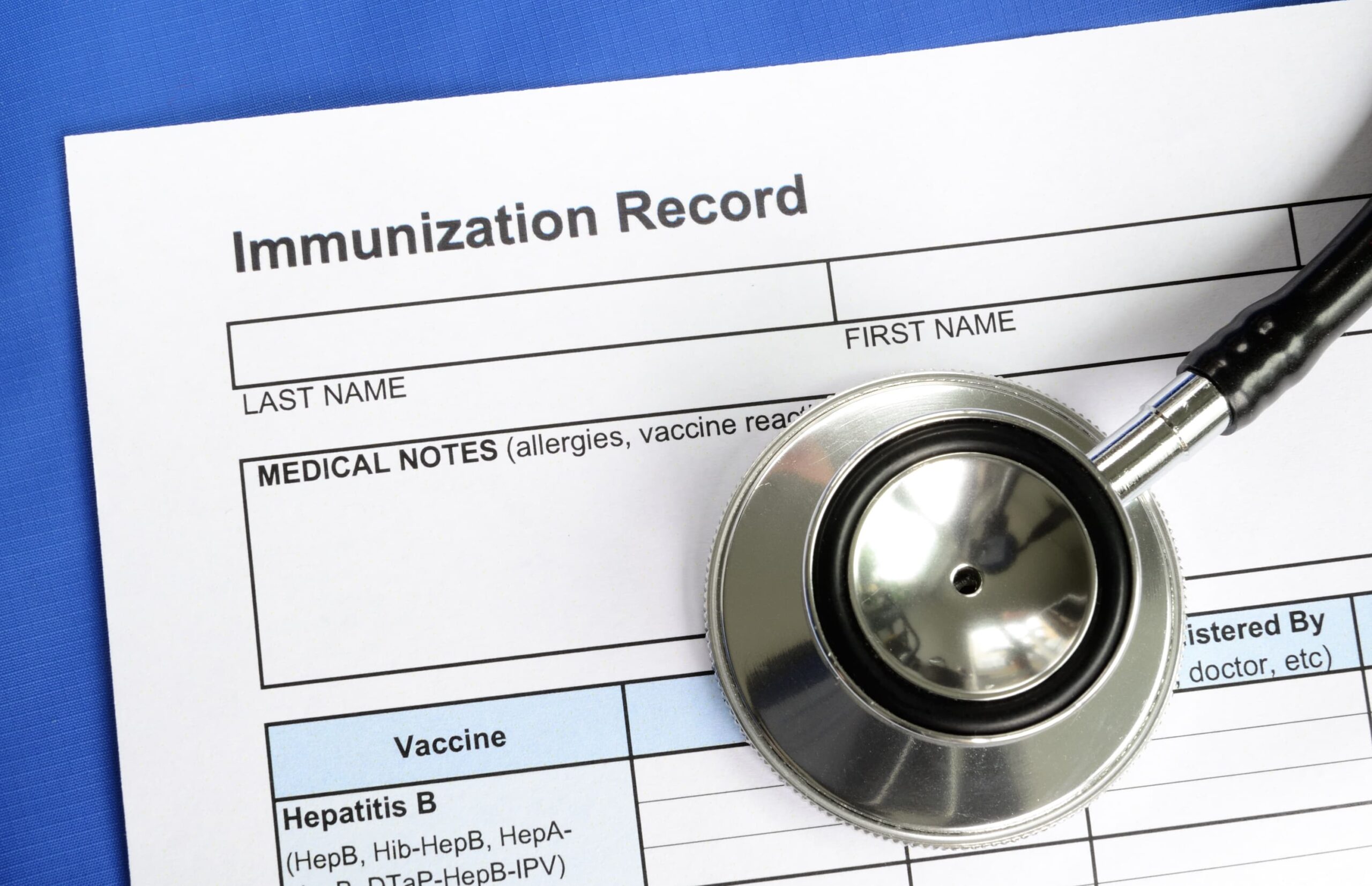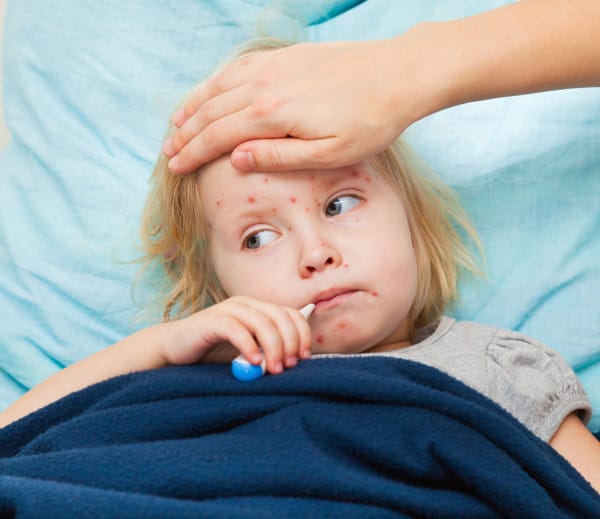Group B strep (GBS) colonization increases many risks during pregnancy, so moms want to know how to decrease their chances of carrying GBS. This article shares some strategies for GBS prevention and treatment based on integrative medicine and natural medicine principles. The strategies covered include probiotics, herbs, zinc supplementation, and lifestyle considerations.
What Is Group B Strep (GBS)?
Group B strep is the common name for Streptococcus agalactiae, a type of bacteria commonly found in healthy people’s urinary tract, digestive tract, and genitals. It’s so common that about one in five pregnant women will test positive for GBS at the 36/37 week GBS screening test.
Testing positive for GBS at the end of pregnancy does not mean that you are sick or that anything bad will happen to your baby. It is not cause for alarm. However, the presence of GBS increases some risks during pregnancy, so doing all that you can to prevent GBS is a wise course of action.
Why Prevent Group B Strep (GBS)?
The most concerning effect of GBS colonization is the possibility of passing it to your infant at birth. In most cases, if GBS is passed to the infant at birth, there are no symptoms and it becomes part of their healthy microbiome. However, in rare cases, GBS can cause a serious infection in infants called Group B Strep disease. In the United States, it is recommended that women who test positive for GBS are offered IV antibiotics during labor to reduce the chances of their infant developing Group B Strep disease.
GBS colonization during pregnancy is associated with increased rates of:
- Cesarean section
- Preterm labor/birth
- Chorioamnionitis (infection of placenta and amniotic fluid)
- Endometritis (postpartum infection of the womb)
- Heavy bleeding after birth
Read More: Does Screening For GBS In Pregnancy Cause More Harm Than Good? – Dr. Green Mom
Probiotics For GBS Prevention
Probiotics are safe to use in pregnancy and are my favorite natural remedy for GBS prevention.
Probiotics can be used in three ways. For the most thorough approach, I usually recommend that women take advantage of all three of the following probiotic options during their second and third trimesters: Probiotics can be 1) taken orally daily, 2) inserted into the vagina via a probiotic suppository, and/or 3) consumed as they naturally occur in fermented foods.
Oral Probiotic Supplementation For GBS Prevention & Treatment
Several different strains of probiotics have been studied for GBS prevention and treatment (see below for research). While almost all probiotics will offer some benefit, probiotics with the strains listed below will likely be the most effective at preventing GBS.
An important note: using probiotics to prevent and treat GBS colonization seems to be more effective when the probiotics are used daily. Stopping the probiotics or taking them irregularly may allow GBS to come back.
Click the links below to see some of the research on various strains of probiotics and their ability to decrease Group B strep during pregnancy:
- Lactobacillus rhamnosus
- Lactobacillus fermentum and Lactobacillus rhamnosus
- Lactobacillus rhamnosus and Lactobacillus fermentum
- Lactobacillus rhamnosus and Lactobacillus reuteri
- Lactobacillus salivarius
- Lactobacillus plantarum
- Lactobacillus paracasei and Lactobacillus brevis
- Lactobacillus acidophillus and Lactobacillus paracasei
- Lactobacillus crispatus and Lactobacillus gasseri
- Clostridium butyricum
- Enterococcus faecium
Vaginal Probiotic Suppositories
Using vaginal probiotic suppositories has the advantage of delivering probiotics directly to the area where they are needed. Probiotic suppositories are less well researched for GBS prevention, but they have a long history of use by many mothers and midwives.
You can purchase pre-made suppositories or make your own.
DIY Probiotic Suppositories
Melt 1.5 tablespoons of cocoa butter with 1.5 tablespoons of coconut oil. Stir in the contents of 1 capsule of a quality probiotic and then pour into suppository molds and refrigerate. Suppository molds are easy to find online.
In my practice, I have most women insert one probiotic suppository vaginally before bed once per week during their third trimester. If they are dealing with a vaginal infection (yeast or bacteria), or recurrent urinary tract infections, I may have them use suppositories more frequently. Be sure to wear a pantyliner when using a vaginal suppository before bed because some of the product may leak and could stain bedding.
Eating Fermented Foods
Consuming fermented foods increases microbiome diversity, reduces inflammation, and improves the overall immune response. Fermented foods boost overall health, while a well-formulated probiotic supplement provides a more targeted approach. Probiotic-rich foods to enjoy while pregnant include sauerkraut, kimchi, yogurt, kombucha, kvass, kefir, miso, and more.
Herbal Suppositories For GBS Prevention
Herbal suppositories are another time-tested way to improve vaginal health during pregnancy. Some midwives recommend placing a whole garlic clove into the vagina as an overnight suppository.
 I know many women and doctors who swear by this strategy, and garlic does kill GBS, but using raw garlic as a suppository makes me uncomfortable because of the risk of garlic burns. Suppositories containing garlic extract may be a safer way to take advantage of the antimicrobial benefits of garlic without the risk of burns.
I know many women and doctors who swear by this strategy, and garlic does kill GBS, but using raw garlic as a suppository makes me uncomfortable because of the risk of garlic burns. Suppositories containing garlic extract may be a safer way to take advantage of the antimicrobial benefits of garlic without the risk of burns.
Suppositories containing essential oils and herbs may be helpful based on a long history of experience from many women, herbalists, and midwives. Many herbs and essential oils have scientific evidence that they kill GBS in test tubes, but they haven’t been scientifically tested in the human body.
Speak with an experienced practitioner before using herbal vaginal suppositories during pregnancy.
Zinc For GBS Prevention & Treatment
Zinc may help kill group B strep. Pregnant women can safely take up to 40mg of zinc per day. If a patient tests positive for GBS, I often have her increase her zinc intake through food or supplementation.
Herbs For GBS Prevention & Treatment
As mentioned above, research shows that garlic can kill GBS. A vital molecule, allicin, is only present in raw garlic. Allicin rapidly breaks down when cooked or exposed to air. When taking garlic medicinally, be sure to use a garlic extract that contains allicin or consume raw garlic.
Echinacea is another common natural remedy for group B strep. This immune-boosting herb is safe during pregnancy and may help the body’s immune system to clear GBS. Echinacea is supported by traditional use, but has yet to be explored in the research.
Lifestyle Changes For A Healthy Vaginal Microbiome
Lifestyle plays an important role in microbiome health. Lifestyle changes that can improve the health of your vaginal microbiome include:
- Reduce the amount of sugar and processed food in your diet
- Wear breathable cotton or bamboo underwear
- Avoid scented or synthetic vaginal hygiene products
- Eat a nutrient-rich diet and supplement with immune-enhancing vitamins and minerals like those found in a good prenatal multivitamin
- Take an omega-3 supplement or eat a minimum of 2 servings of fish per week
- Work on your gut health and microbiome
What To Do If You Test Positive For GBS At 36 Weeks?
Though this article focuses on how to prevent and treat GBS during pregnancy to avoid unnecessary antibiotic use, I do believe that antibiotics are sometimes a wise idea prophylactically. This choice depends on your risk factors and is a conversation to have with your doctor or midwife.
Suppose you need to use antibiotics during or after labor and delivery. In that case, I generally recommend that my patients use a high-dose probiotic for 2-4 weeks after antibiotic use followed by a maintenance probiotic for at least 4-6 months, plus a gut healing protocol if needed. Infants should be breastfed if possible and given a probiotic that contains a mix of infant-specific lactobacillus and bifidus species.
Read more: How To Avoid Side Effects of Antibiotics Using Natural Medicine – Dr. Green Mom
Summary
Group B Strep (GBS) is a normal part of many healthy women’s vaginal microbiomes, but it can cause complications during labor and delivery and increases the risk of group B strep disease in infants. Preventing and treating group B strep colonization may lead to better pregnancy outcomes. There are many natural options for reducing GBS, including herbs, probiotics, nutrients, and lifestyle changes.
References:
Corvaglia, L., Tonti, G., Martini, S., Aceti, A., Mazzola, G., Aloisio, I., Di Gioia, D., & Faldella, G. (2016). Influence of Intrapartum Antibiotic Prophylaxis for Group B Streptococcus on Gut Microbiota in the First Month of Life. Journal of pediatric gastroenterology and nutrition, 62(2), 304–308. https://doi.org/10.1097/MPG.0000000000000928
Hanson, L., VandeVusse, L., Malloy, E., Garnier-Villarreal, M., Watson, L., Fial, A., Forgie, M., Nardini, K., & Safdar, N. (2022). Probiotic interventions to reduce antepartum Group B streptococcus colonization: A systematic review and meta-analysis. Midwifery, 105, 103208. https://doi.org/10.1016/j.midw.2021.103208
Lai, T. J., Wang, Y. H., Chong, E., Lin, Y. M., Huang, C. C., Feng, K. J., & Teng, S. W. (2021). The impact of prenatal use of oral Clostridium butyricum on maternal group B Streptococcus colonization: A retrospective study. Taiwanese journal of obstetrics & gynecology, 60(3), 442–448. https://doi.org/10.1016/j.tjog.2021.03.009
Money, D., Allen, V. M., & INFECTIOUS DISEASES COMMITTEE (2013). The prevention of early-onset neonatal group B streptococcal disease. Journal of obstetrics and gynaecology Canada: JOGC = Journal d’obstetrique et gynecologie du Canada : JOGC, 35(10), 939–948. https://doi.org/10.1016/S1701-2163(15)30818-5
Liu, Y., Huang, Y., Cai, W., Li, D., Zheng, W., Xiao, Y., Liu, Y., Zhao, H., & Pan, S. (2020). Nan fang yi ke da xue xue bao = Journal of Southern Medical University, 40(12), 1753–1759. https://doi.org/10.12122/j.issn.1673-4254.2020.12.09
Hanson, L., Vandevusse, L., Duster, M., Warrack, S., & Safdar, N. (2014). Feasibility of oral prenatal probiotics against maternal group B Streptococcus vaginal and rectal colonization. Journal of obstetric, gynecologic, and neonatal nursing : JOGNN, 43(3), 294–304. https://doi.org/10.1111/1552-6909.12308
Aloisio, I., Mazzola, G., Corvaglia, L. T., Tonti, G., Faldella, G., Biavati, B., & Di Gioia, D. (2014). Influence of intrapartum antibiotic prophylaxis against group B Streptococcus on the early newborn gut composition and evaluation of the anti-Streptococcus activity of Bifidobacterium strains. Applied microbiology and biotechnology, 98(13), 6051–6060. https://doi.org/10.1007/s00253-014-5712-9
Martín, V., Cárdenas, N., Ocaña, S., Marín, M., Arroyo, R., Beltrán, D., Badiola, C., Fernández, L., & Rodríguez, J. M. (2019). Rectal and Vaginal Eradication of Streptococcus agalactiae (GBS) in Pregnant Women by Using Lactobacillus salivarius CECT 9145, A Target-specific Probiotic Strain. Nutrients, 11(4), 810. https://doi.org/10.3390/nu11040810
Iseppi, R., Messi, P., Camellini, S., & Sabia, C. (2019). Bacteriocin activity of Lactobacillus brevis and Lactobacillus paracasei ssp. paracasei. Journal of medical microbiology, 68(9), 1359–1366. https://doi.org/10.1099/jmm.0.001045
He, Y., Niu, X., Wang, B., Na, R., Xiao, B., & Yang, H. (2020). Evaluation of the Inhibitory Effects of Lactobacillus gasseri and Lactobacillus crispatus on the Adhesion of Seven Common Lower Genital Tract Infection-Causing Pathogens to Vaginal Epithelial Cells. Frontiers in medicine, 7, 284. https://doi.org/10.3389/fmed.2020.00284
Zárate, G., & Nader-Macias, M. E. (2006). Influence of probiotic vaginal lactobacilli on in vitro adhesion of urogenital pathogens to vaginal epithelial cells. Letters in applied microbiology, 43(2), 174–180. https://doi.org/10.1111/j.1472-765X.2006.01934.x
Ruíz, F. O., Gerbaldo, G., García, M. J., Giordano, W., Pascual, L., & Barberis, I. L. (2012). Synergistic effect between two bacteriocin-like inhibitory substances produced by Lactobacilli Strains with inhibitory activity for Streptococcus agalactiae. Current microbiology, 64(4), 349–356. https://doi.org/10.1007/s00284-011-0077-0
Ermolenko, E. I., Chernysh, A., Martsinkovskaia, I. V., & Suvorov, A. N. (2007). Zhurnal mikrobiologii, epidemiologii i immunobiologii, (5), 73–77.
Ortiz, L., Ruiz, F., Pascual, L., & Barberis, L. (2014). Effect of two probiotic strains of Lactobacillus on in vitro adherence of Listeria monocytogenes, Streptococcus agalactiae, and Staphylococcus aureus to vaginal epithelial cells. Current microbiology, 68(6), 679–684. https://doi.org/10.1007/s00284-014-0524-9
Vicariotto, F., Mogna, L., & Del Piano, M. (2014). Effectiveness of the two microorganisms Lactobacillus fermentum LF15 and Lactobacillus plantarum LP01, formulated in slow-release vaginal tablets, in women affected by bacterial vaginosis: a pilot study. Journal of clinical gastroenterology, 48 Suppl 1, S106–S112. https://doi.org/10.1097/MCG.0000000000000226
Cajulao, J. M., & Chen, L. (2021). Lactobacillus rhamnosus reduces the cytotoxic effects of group B streptococcus on HeLa cells. Microbial pathogenesis, 161(Pt A), 105271. https://doi.org/10.1016/j.micpath.2021.105271
Gilbert, N. M., Foster, L. R., Cao, B., Yin, Y., Mysorekar, I. U., & Lewis, A. L. (2021). Gardnerella vaginalis promotes group B Streptococcus vaginal colonization, enabling ascending uteroplacental infection in pregnant mice. American journal of obstetrics and gynecology, 224(5), 530.e1–530.e17. https://doi.org/10.1016/j.ajog.2020.11.032
Marziali, G., Foschi, C., Parolin, C., Vitali, B., & Marangoni, A. (2019). In-vitro effect of vaginal lactobacilli against group B Streptococcus. Microbial pathogenesis, 136, 103692. https://doi.org/10.1016/j.micpath.2019.103692
Olsen, P., Williamson, M., Traynor, V., & Georgiou, C. (2018). The impact of oral probiotics on vaginal Group B Streptococcal colonisation rates in pregnant women: A pilot randomised control study. Women and birth : journal of the Australian College of Midwives, 31(1), 31–37. https://doi.org/10.1016/j.wombi.2017.06.012
López-Moreno, A., & Aguilera, M. (2021). Vaginal Probiotics for Reproductive Health and Related Dysbiosis: Systematic Review and Meta-Analysis. Journal of clinical medicine, 10(7), 1461. https://doi.org/10.3390/jcm10071461
Sheyholislami, H., & Connor, K. L. (2021). Are Probiotics and Prebiotics Safe for Use during Pregnancy and Lactation? A Systematic Review and Meta-Analysis. Nutrients, 13(7), 2382. https://doi.org/10.3390/nu13072382
Hitl, M., Kladar, N., Gavarić, N., Srđenović Čonić, B., & Božin, B. (2021). Garlic burn injuries- a systematic review of reported cases. The American journal of emergency medicine, 44, 5–10. https://doi.org/10.1016/j.ajem.2021.01.039
Cohain J. S. (2004). GBS, pregnancy and garlic: be a part of the solution. Midwifery today with international midwife, (72), 24–25.
Torres, K., Lima, S., Torres, L., Gamberini, M. T., & Silva Junior, P. (2021). Garlic: An Alternative Treatment for Group B Streptococcus. Microbiology spectrum, 9(3), e0017021. https://doi.org/10.1128/Spectrum.00170-21
Morguette, A., Bigotto, B. G., Varella, R. L., Andriani, G. M., Spoladori, L., Pereira, P., de Andrade, F. G., Lancheros, C., Nakamura, C. V., Syogo Arakawa, N., Bruschi, M. L., Carlos Tomaz, J., Lonni, A., Kerbauy, G., Tavares, E. R., Yamauchi, L. M., & Yamada-Ogatta, S. F. (2019). Hydrogel Containing Oleoresin From Copaifera officinalis Presents Antibacterial Activity Against Streptococcus agalactiae. Frontiers in microbiology, 10, 2806. https://doi.org/10.3389/fmicb.2019.02806
Costantini, L., Molinari, R., Farinon, B., & Merendino, N. (2017). Impact of Omega-3 Fatty Acids on the Gut Microbiota. International journal of molecular sciences, 18(12), 2645. https://doi.org/10.3390/ijms18122645
Francis, J. D., Guevara, M. A., Lu, J., Madhi, S. A., Kwatra, G., Aronoff, D. M., Manning, S. D., & Gaddy, J. A. (2022). The antimicrobial activity of zinc against group B Streptococcus is strain-dependent across diverse sequence types, capsular serotypes, and invasive versus colonizing isolates. BMC microbiology, 22(1), 23. https://doi.org/10.1186/s12866-021-02428-3







